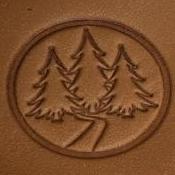-
Posts
243 -
Joined
-
Last visited
About TonyRV2
- Birthday 08/05/1955
Profile Information
-
Gender
Male
-
Location
Michigan's Thumb
-
Interests
I'm a knife maker that got into leather to make sheaths. I'm finding I enjoy the leather side of things every bit as much as knife making.
LW Info
-
Leatherwork Specialty
Knife Sheaths, Handbags, Wallets, Guitar Straps, etc.
-
Interested in learning about
Holsters
-
How did you find leatherworker.net?
internet search
Recent Profile Visitors
4,974 profile views
TonyRV2's Achievements

Member (2/4)
-

Fortuna band-knife splitter trips internal breaker
TonyRV2 replied to Matt S's topic in Leather Machinery
As a former engineer and electronics professor, this is not a straightforward question to answer without having access to the manual and wiring instructions. I did look online for something but to no avail. In my experience when a machine can be wired for either 440 or 220 3 phase, the manufacturer is referring to the mains voltage. I also assume by static converter you're referring to a single phase to 3 phase converter that's delivering the 220 (roughly) 3 phase that you need for the machine. All of that said, I believe that your breaker should therefore be set up for 220V operation since that's what your delivering to the motors. I am concerned though about the phases being unbalanced, 250, 225 and 205 respectively. I would think that this at the very least is going to cause some unwanted vibration in your motor, but first things first. -

Material For Making Reusable Templates?
TonyRV2 replied to AusSimon's topic in Patterns and Templates
Bag stiffener...Its cheap and easy to cut. Its also large enough for bigger patterns. With care you can cut around it but I normally trace it on to the leather. -
OH!! ... you mean a 'several sixteenths' wrench.
-
I just did pretty much this exact same thing, and on the exact table that the OP has posted a picture of. My Juki1541 sits atop it. Only difference is that I had a few 1X4's sitting around so I just used them instead of cutting up some plywood.
-
Obviously the OP understands both systems as everyone should. Its an easy matter to measure directly in both systems given the tools. This is not rocket surgery.
-
Gee....thanks for point that out to all of us. Now we all care. lmao
-
Thanks for posting. I do already follow many of these and will likely add a few more after looking through some of the others. And from what I've seen...most are NOT advertisements for anything but a good lesson in leathercraft.
-
I would offer only this advice for someone casually looking to by a used sewing machine for what is currently their hobby: Never buy a machine unless you can sew some leather on it first. It looks to me from the picture that this machine is offered as 'head' only. No motor, no controls, no table. At the very least you'd have to sink another 300/400 in to this to make it usable, and even then, as Ferg said, there's no guarantee that the head doesn't have critically worn parts. This is why Ferg wants 1K for his. It's all set up and ready to go. Save some money and get yourself something you know is going to work for you. There's an old saying that has served me well.... "Buy once, cry once."
-
Early morning is the best time...around 6 or 7am, practically no lag. Apparently a lot of leather craftsmen like to sleep in.
-
Yep...downloaded this book for free like BillyBopp says, so it is available along with all the 100's upon 100's of other things Tandy is offering for free. I just checked a few minutes ago and its still going on.
-
If you go to the Fiebings website there's a page there that recommends mixing the alcohol based dyes with 100% Neatsfoot at a ratio of 94% Neatsfoot oil to 6% dye and no...that is not a misprint. Apparently the chemists at Fiebings found this to be the optimum mix for dying leather. I have not tried this myself yet, but will in the not too distant future. Up to now I have found that a light coat of oil prior to dying did improve the process. Some use just plain water, perhaps that is just as well. ymmv Here's a link to the Fiebings page: https://www.fiebing.com/tips/mixing-fiebings-leather-dye-and-prime-neatsfoot-oil-compound/
-
You may as well be asking Horween its tanning process for creating their famous pullup leathers. It's akin to asking a BBQ champion the recipe for their BBQ sauce. It just aint gonna happen. Most tanning and finishing processes are well guarded company secrets. That said, at least you have a starting point knowing that Nubuck is made by sanding and buffing the grain side of the leather. I doubt that doing it without machinery is going to yield a very uniform result, but if your hell bent on doing it then its going to take experimentation on your part. The main caveat is this...by the time you pick up a hide or three of veg tanned leather and start experimenting with it, you may as well have just bought the Nubuck hide to begin with.
-
This clip looks simple enough. Why not get yourself a piece of sheet metal and take a stab at making your own?
-

Review of Hermann Oak Leather by SLC (Economy grade)
TonyRV2 replied to YinTx's topic in Leatherwork Conversation
I agree with everything you've said 100%. And yes, most of what I've ordered from them has been good.




